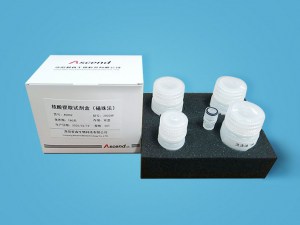Classification of nucleic acid extraction magnetic beads
With the outbreak of the new coronavirus, although it has been brought under control, everyone still cannot take it lightly. Everyone should know that all suspected cases and patients with fever must undergo nucleic acid testing to confirm whether they are new coronaviruses. The steps of nucleic acid detection are mainly divided into three steps:
1. Sampling: Collect samples that may contain viruses from the respiratory tract or other parts of the human body.
2. Extraction: extract the viral nucleic acid from the sample and separate it from other substances.
3. Detection: Detect the extracted virus content by fluorescence quantitative PCR method.
Among them, magnetic beads are one of the necessary tools for nucleic acid extraction. So what are the classification and functions of magnetic beads for nucleic acid extraction?
Classification and function of magnetic beads: According to the surface properties, they can be divided into the following three categories
1. Silicone hydroxy magnetic beads
This is one of the most widely used magnetic beads. When using silanol magnetic beads to extract nucleic acids, high concentrations of chaotropic salts (NaI, NaClO4, GuHCI, GuSCN, etc.) are usually required. High concentration of salt ions can effectively shield the electrostatic repulsion in the solution. At the same time, chaotropic salt ions can also competitively combine with the surface of magnetic beads and nucleic acid molecules, destroy the original hydration layer on both surfaces, and promote the adsorption (hydrogen bond + van der Waals force) between the surface of magnetic beads and nucleic acid molecules. Since commonly used chaotropic salts such as guanidine ions have an inhibitory effect on PCR, they must be removed in the subsequent washing steps. The removal effect can be monitored by the absorbance ratio.

2. Carboxy magnetic beads
In addition to being able to bind nucleic acid molecules in a high-concentration chaotropic salt environment, such magnetic beads can bind nucleic acid molecules through another special mechanism. By adding a certain concentration of PEG and NaCl to the solution, the nucleic acid molecules can gradually curl up from the stretched conformation to a small ball shape, and most of the negative charges on it are also shielded, which promotes the adsorption of the nucleic acid molecules to the magnetic beads. The larger the molecular weight of the nucleic acid molecule, the more likely it is that this conformational change from the stretched coil to the curled down ball will occur. Therefore, by adjusting the volume ratio of the salt solution to the nucleic acid sample, it is possible to achieve a larger molecular weight nucleic acid fragment on the carboxyl magnetic beads. The preferential adsorption on the surface achieves the so-called fragment screening effect.
3. Amino/imidazolyl and other positively charged magnetic beads
Such magnetic beads can easily realize the reversible binding of nucleic acid molecules on the surface by adjusting the pH. However, because the positively charged surface adsorbs nucleic acid molecules too strongly, it is easy to cause the yield to be low. Therefore, the use of positively charged magnetic beads is not as widespread as silanol and carboxyl magnetic beads.
The classification and function of magnetic beads for nucleic acid extraction are explained in detail above. Aisen uses nano-biomagnetic beads as the core to produce nucleic acid extractors and their matching magnetic beads nucleic acid extraction kits.



